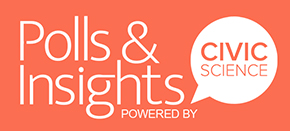In a recent survey conducted by CivicScience, wine preferences among 9,286 U.S. users revealed intriguing demographic distinctions. The survey highlighted not only the types of wine people prefer, but also how these preferences intersect with gender, income, education, parental status, and living areas.
Red wine emerged as the most popular choice, with 23% of respondents favoring it. Interestingly, 55% of red wine enthusiasts are male, and 47% reside in suburban areas. This suburban preference contrasts with sparkling wine drinkers, 40% of whom live in cities. Meanwhile, rosé, preferred by 9% of respondents, shows a significant gender skew, with 61% of its drinkers being female.
Income levels also play a role in wine preferences. Rosé drinkers have the highest percentage, 27%, in the $0 – $29,999 income bracket, while red wine drinkers are most prevalent in the $50,000 – $74,999 range, at 20%. This suggests that rosé might appeal more to those with lower incomes, whereas red wine attracts a slightly wealthier demographic.
Parental status further differentiates wine preferences. Among white and sparkling wine drinkers, 41% are parents, indicating a potential link between these wine types and family life. In contrast, only 34% of rosé drinkers are parents, suggesting that rosé might appeal more to those without children.
Education levels reveal another layer of distinction. While 23% of red wine drinkers hold a bachelor’s degree, a notable 32% of rosé drinkers have only a high school or GED education. This disparity might indicate that higher education correlates with a preference for red wine, while rosé attracts those with less formal education.
The survey also uncovered that 44.4% of respondents rarely or never drink wine, a significant portion that highlights the diverse drinking habits across the U.S. This group is evenly split between males and females, with the highest concentration, 23%, in the $0 – $29,999 income bracket.
These findings paint a vivid picture of how wine preferences intersect with various demographic factors. The data suggests that wine choice is not merely a matter of taste but is influenced by a complex interplay of gender, income, education, and lifestyle. As wine continues to be a popular beverage, understanding these nuances can offer valuable insights into consumer behavior and market trends.
This article’s data comes solely from CivicScience’s database, which contains nearly 700,000 poll questions and 5 billion consumer insights. Our AI content creation tool, DataScribe, supported the article.


